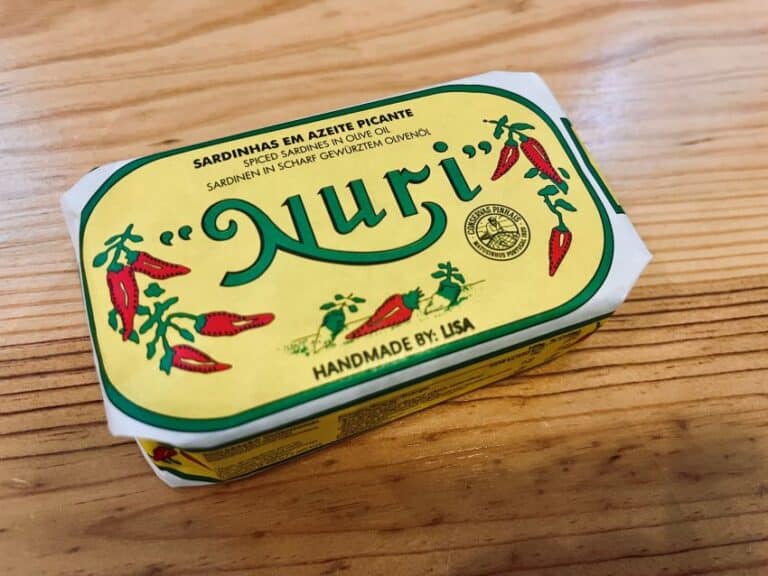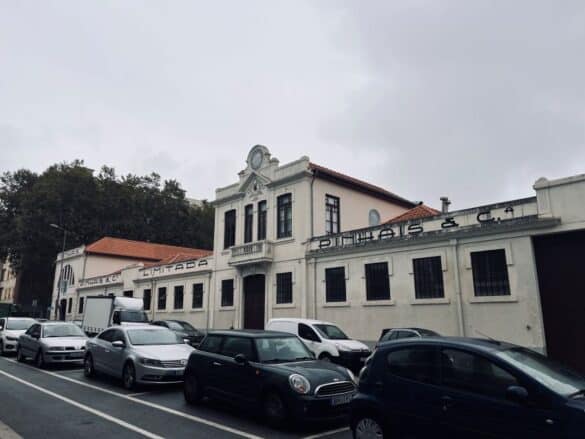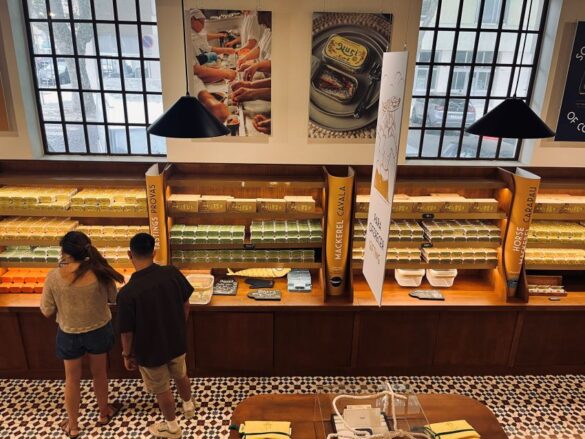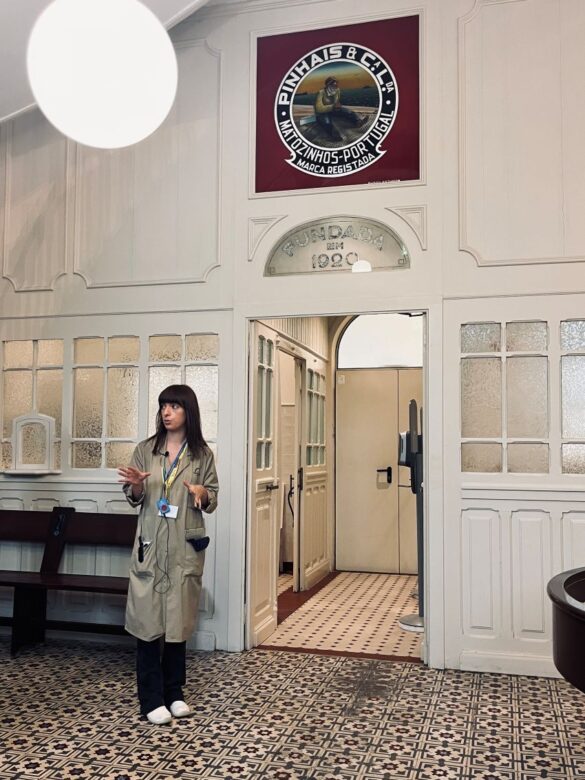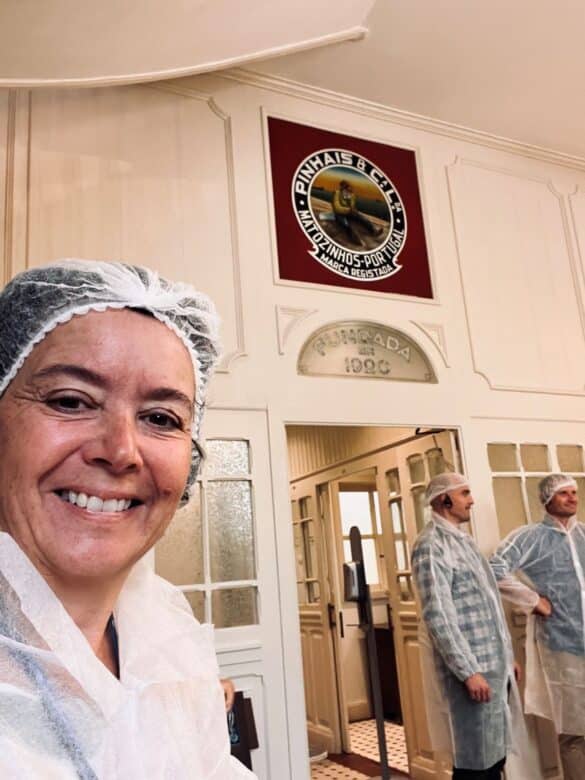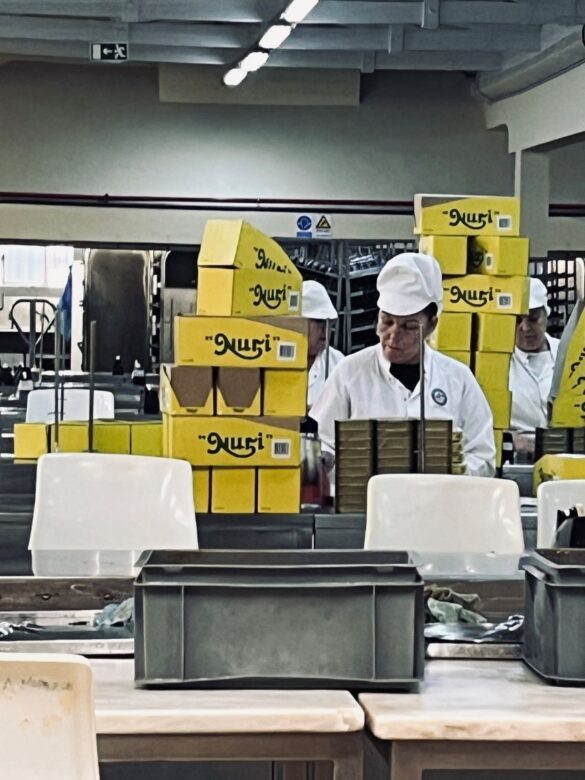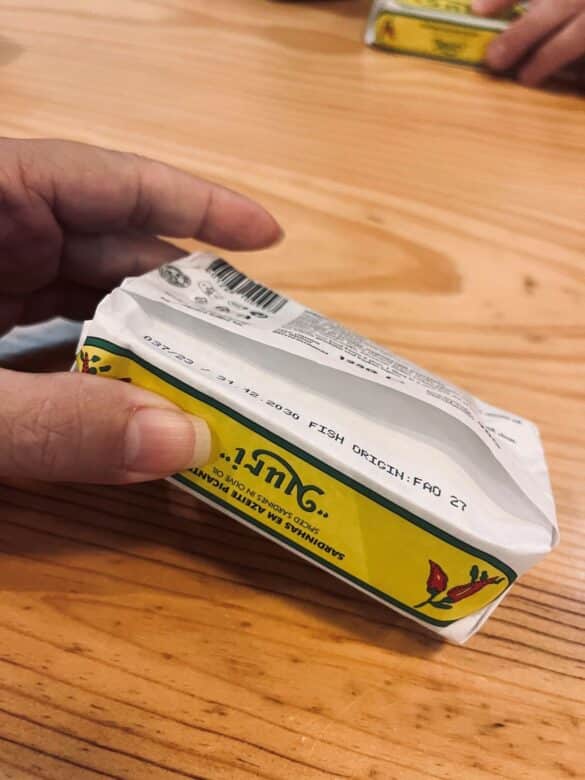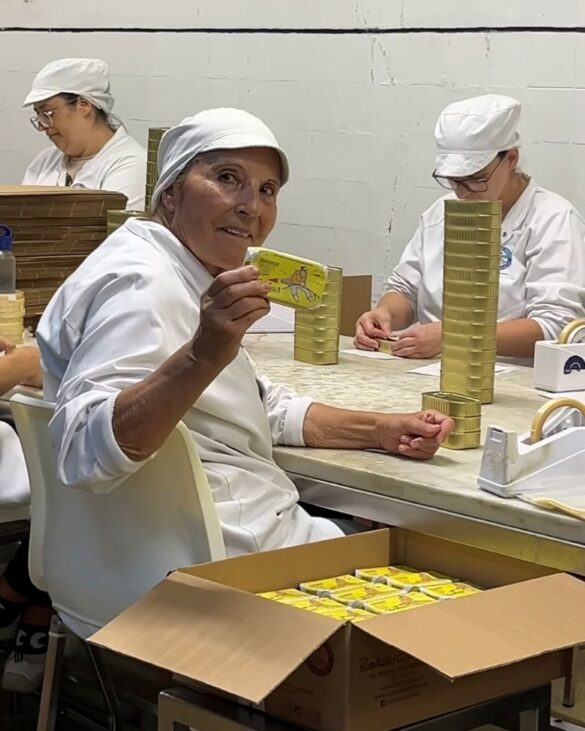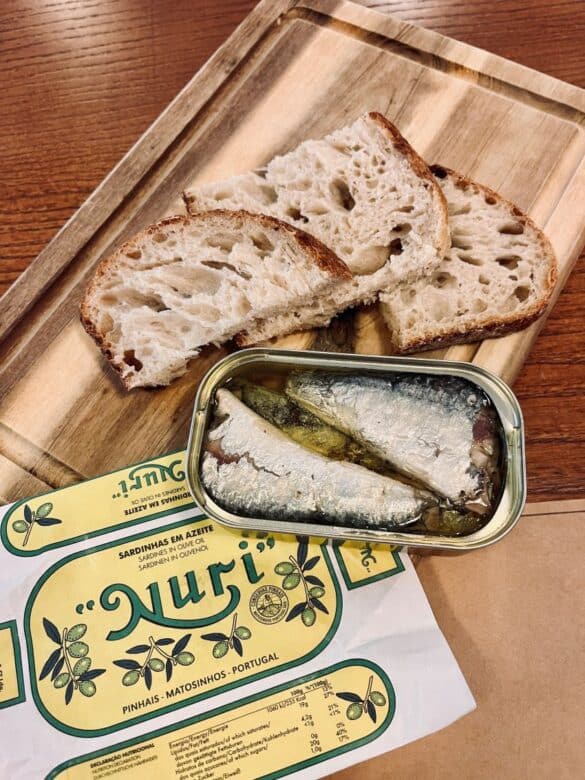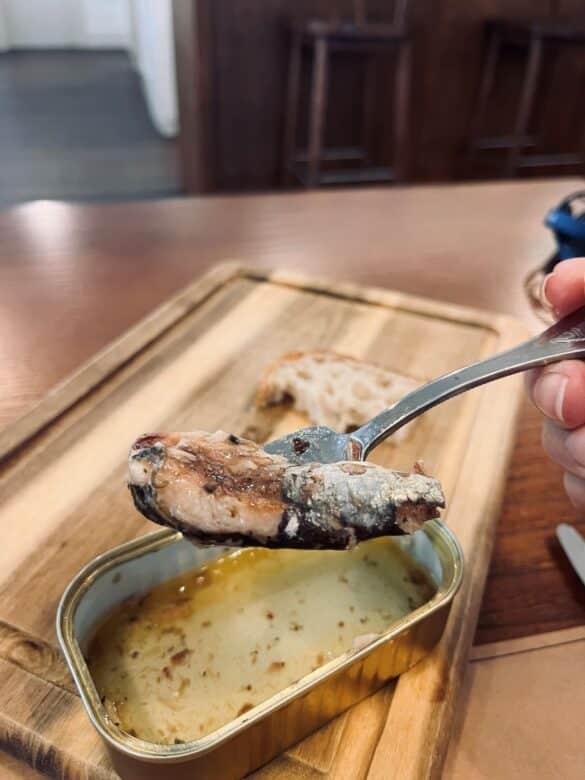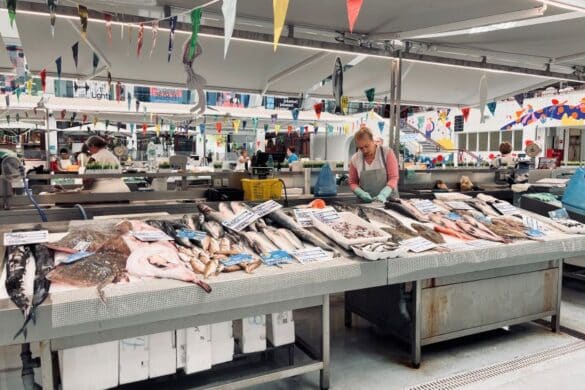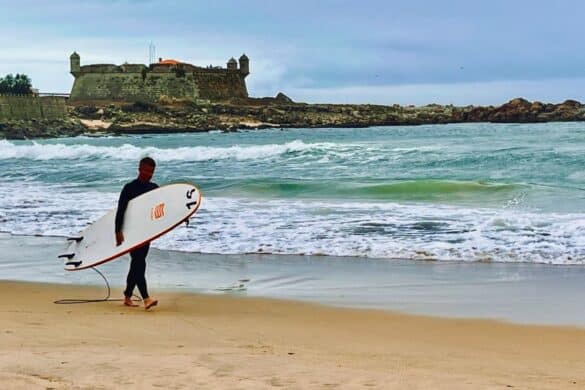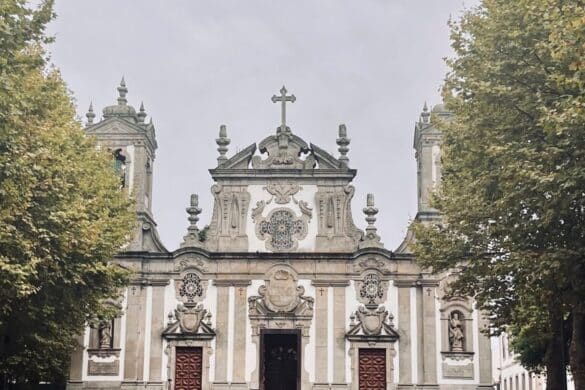This post contains affiliate links. If you make a purchase through these links, I can earn a commission at no extra cost to you. Thank you!
When I first heard about a sardine tour in Porto, I wasn’t sure what to expect. I mean, how exciting could a factory tour be? But after hearing so many good things about the Conservas Pinhais Factory Tour in Matosinhos, I figured, why not? I was already in the city, and a morning by the coast sounded perfect.
What surprised me most was how much fun it turned out to be. It wasn’t just interesting – it was fascinating, interactive, and unexpectedly emotional. I was so glad I went because this ended up being one of the best tours I’ve ever done.
I took the 9:40 a.m. bus from Porto and spent a few hours exploring Matosinhos afterward. I was relieved to find the area mostly flat – a nice break from the hills of Porto.
If you’re looking for something local, authentic, and offbeat, this sardine factory tour is a must-do.
First Impressions
The Conservas Pinhais Factory doesn’t look flashy from the outside, but once I stepped in, I could feel the history. At the entrance, there’s a cute little gift shop filled with tinned sardines, serving ware, and fun gifts like plush toys and kitchen décor.
Before the tour began, we were asked to put our bags, hats, sunglasses, and jewelry into lockers. You can keep your phone, though so you can take photos. Everyone wears disposable white suits, hairnets, and booties to keep the production area spotless.
The group was small, about ten people, which made it feel personal. We were given earbuds to hear our guide clearly as we moved through the factory.
The tour began with a short video about the company’s history. I won’t give away the whole story, but it involves a father and daughter, and it’s a tearjerker. You’ll want a tissue handy. I definitely needed one!
The History Behind Pinhais
Conservas Pinhais has been in business since 1920, proudly keeping traditional Portuguese methods alive for more than a century. It’s still family-run, and you can feel that sense of legacy from the moment you arrive.
The company produces two brands – Pinhais and Nuri. Pinhais is sold mostly in Portuguese shops, while Nuri is the brand that gets exported.
During the tour, our guide shared a sweet story about how Nuri got its name. One of the company’s early partners traveled to Spain, where he met a woman named Nuria. He was so taken with her that when the export brand was created, he named it after her.
Even though Pinhais has grown, they’ve stayed true to their roots. Everything is still done mostly by hand, and the factory still feels like a piece of living history. It’s the care, craft, and connection that make this Pinhais Factory Tour one of the most unique things to do in Porto.
Inside the Factory
I really had no idea how much work goes into canning sardines. Before this visit, I thought all companies did it the same way. But the Pinhais Factory has a unique process – one that sets them apart.
Most sardine brands cook their fish inside the can, but Pinhais cooks them before they’re packed into the can. This keeps the freshest fish flavor and texture, even though it means the sardines shrink more.
The factory produces about 25,000 cans per day and employs 70–75 workers, many of whom have been there for decades. Try and book your tour on a weekday to see the production line in action. I don’t believe it operates on weekends.
We started in the old office space, complete with vintage ledger books and original typewriters. It’s now part of a small museum area that honors the company’s past. From there, we walked into the main production room, where workers were preparing the sardines by hand.
The sardines arrive fresh each morning from the nearby Matosinhos fishing port. If you book an early tour, you can watch the morning delivery. I went later, but it was still fascinating to see the marble basins where the fish are cleaned. The same marble basins used since 1920!
Overhead, a video played showing the journey from sea to can, while our guide explained each step. From cleaning to packing, it’s all done by hand. The level of skill and speed was amazing.
Then we moved to the production lines where workers packed the sardines, added olive oil, spices, and garnishes, then sealed them with practiced precision. It was rhythmic, efficient, and oddly satisfying to watch.
The Wrapping Room
Next, we walked into a bright, lively room filled with women sitting around long tables. This is where the tins are wrapped by hand in the colorful paper that makes Nuri and Pinhais stand out on store shelves.
Our guide told us that each woman can wrap a tin in about 8–10 seconds. It was mesmerizing. Their hands moved so quickly it was almost a blur.
Then it was our turn. We gathered around a wooden table where each spot had wrapping paper printed with our names. Such a fun personal touch! The guide demonstrated the proper folding technique, and then we gave it a try.
I thought I did pretty well. My mom used to work in gift wrapping back when department stores still offered it, so I think she would’ve been proud of my neat corners.
We didn’t get to keep the can we wrapped unless that was part of the ticket option, but we could purchase it afterward.
The Sardine Tasting
After the wrapping workshop, we headed upstairs to the tasting room. It’s cozy and warm, with wooden tables and soft lighting. Each guest has their own station with a cutting board, a tin of sardines, fresh bread, and a chalkboard with your name written on it.
All tours include a sardine tasting, but if you want wine, you can choose a ticket that includes it or order a glass separately. They often serve vinho verde, a crisp Portuguese white that pairs perfectly with sardines.
The tasting presentation was beautiful, almost like a personal charcuterie board. The guide explained how to pair the sardines with bread, and even how to taste the olive oil.
The tasting room is also open to the public, so you can return anytime just to enjoy sardines and a drink.
This whole factory tour costs about €30, which I think is a great deal considering how much you get: the video, the full tour, the hands-on wrapping, and the tasting.
Other Things to See in Matosinhos
If you have extra time after your Pinhais Factory Tour, spend some time exploring Matosinhos. The area is easy to walk, and unlike Porto, it’s pretty flat which was a nice break for my legs.
Here are a few things worth checking out:
- Mercado de Matosinhos – The local market is right near the bus stop and packed with vendors selling fish, fruit, cheese, and other local food. It’s lively, colorful, and yes, a bit smelly.
- Matosinhos Beach – Just a short walk from the factory, this wide beach is a favorite with locals and surfers. It’s a great spot to grab a coffee or just sit and enjoy the ocean breeze. It’s also handicap accessible with wooden boardwalks along the sand.
- Igreja do Senhor Bom Jesus de Matosinhos – A gorgeous 18th-century church known for its baroque design and peaceful gardens.
- Parque Basilio Teles – A small park near the church that’s perfect for a short rest or snack.
Getting There
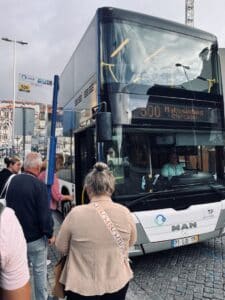
Getting to Conservas Pinhais Factory is easy. I took the 9:40 a.m. Bus 500, which makes the Matosinhos run several times a day. You can buy your ticket at São Bento Train Station or directly on the bus (around €2 each way).
The bus stop is across from São Bento train station. Arrive about 15 minutes early if you want a good seat. It’s a double-decker bus, and the ride offers beautiful coastal views. Sit on the left side for the best scenery along the Tagus River and coastline.
There’s free Wi-Fi onboard, and although the announcements are in Portuguese, it’s easy to follow with Google Maps. The ride ends near the Mercado de Matosinhos, and from there it’s about a 10-minute walk to the factory at Avenida Menéres 700 (also known as Menéres 700 or 189 Matosinhos).
Tours last about 1½ hours and are offered in several languages (Portuguese, English, French, Spanish, and German) so make sure to book the right one for you. I took the standard tour, which included the full tour, wrapping, and tasting. Other options include wine or keeping your wrapped tin.
Final Thoughts
If you’re planning a trip to Portugal, the Pinhais Factory Tour in Matosinhos is absolutely worth adding to your list.
I left with a whole new appreciation for this little fish and the people who make it. It was educational without being boring, structured without feeling rushed, and full of heart.
Whether you’re a foodie, history lover, or just someone curious about local life, this sardine tour in Porto is one you’ll remember.
Resources to Book Your Trip
Flights
I like using Skyscanner to find flight deals. It searches hundreds of airlines and booking sites so you can compare prices, dates, and even airports in one place.
Accommodations
Booking.com is my go-to for hotels, guesthouses, and apartments. I like that you can filter for free cancellation and check reviews before you book.
Activities
For tours and experiences, I recommend GetYourGuide and Viator. Both have everything from walking tours to day trips, plus instant booking and mobile tickets.
eSIM
I’ve used Airalo and Saily for internet access when I travel. You can install the eSIM on your phone before you even leave home and there’s no need to swap physical SIM cards.
Airport Pickups
If you want a stress-free ride from the airport, check out Welcome Pickups. Your driver will meet you inside the terminal, help with your bags, and take you straight to your hotel.
Car Rental
Discover Cars makes it easy to compare rental companies so you get the best rate. You can see all the options and book in advance for peace of mind.
